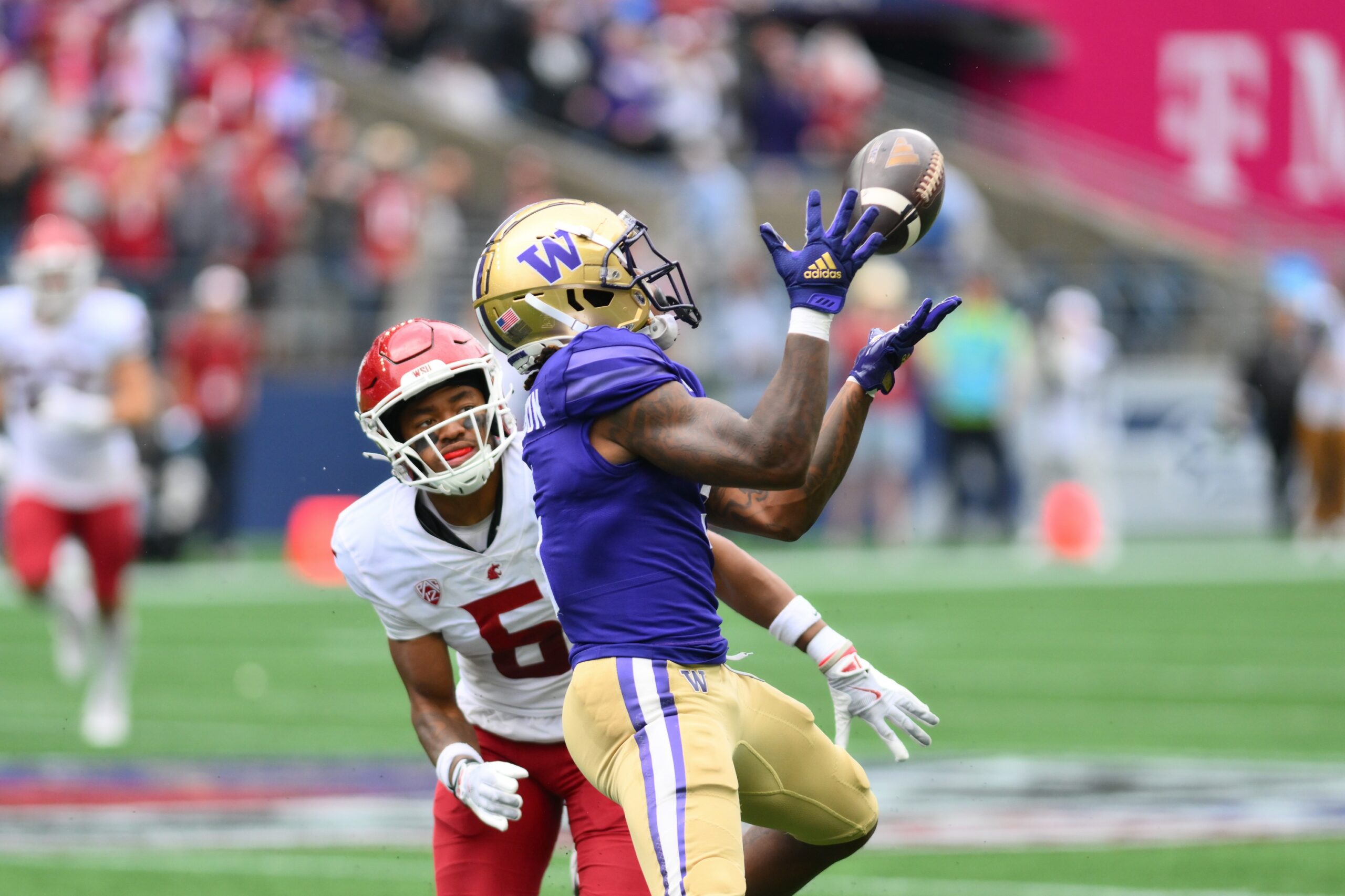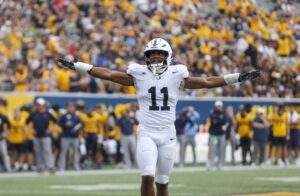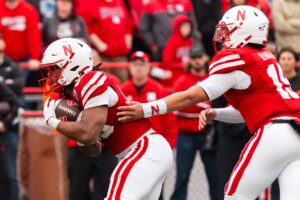Penalties were the eye-popping storyline from Saturday at the Apple Cup. There were an incredible 16 accepted penalties against Washington for 135 yards. It’s tremendously difficult to win a game with that kind of play. But what really happened against Washington State in the Apple Cup? Other than the penalty markers, there were a few key factors that contributed to the Huskies’ first loss of the season.
Cougars’ Run Stuff Rate
Entering the game, one of the key metrics that swung in Washington’s favor was how the Cougar defensive line was playing this season. In their first game of the year against Portland State, the Cougars defended 47 rushing plays. The Washington State defensive line “stuffed” only 10 of those runs. A stuffed run is considered a run that gains zero yards or less. That 21% clip was in the 11th percentile nationally in week one. A week later, Texas Tech ran the ball 26 times. The Cougars stuffed just four of them for a 15% clip, falling into the first percentile nationally.
On Saturday at Lumen Field, the Cougars solidified things up front. On 29 runs defended, Washington State stuffed seven for a 24% clip. That approached the national average of 31% this season. If you take it a step further and look at “stopped” runs, i.e. runs of two yards or less, Washington State was stout. The Cougars stopped 17 of the 29 run plays for two yards or less for 58% stop rate. The Huskies just couldn’t generate push with their offensive line the way the metrics indicated they might be able to pregame.
Husky Offensive Line Concerns
Washington’s leading rusher on the day was Jonah Coleman. He carried the ball 14 times for 75 yards. But if you take out his 29-yard burst at the beginning of the third quarter, Coleman averaged just 3.5 yards per touch with 46 yards. That’s five yards less than his average per carry of eight-and-a-half per attempt entering the Apple Cup. Washington State played a great game on the defensive front, limiting the Husky run game.
But this is also cause for concern for the Washington offensive line. Jedd Fisch said postgame that their adjustment from a zone-blocking scheme to a gap scheme helped open up some runs as the game progressed. Washington rushed for 63 yards in each half of the game, but the average per carry dropped from 5.3 to 3.3 from the first half to the second half. The Cougars tallied five tackles for loss and the Husky run game was largely non-existent. With conference play around the corner, a lot of the success of this team is going to be contingent upon how the offensive line plays. If Saturday was any indication, it needs to improve.
Making Mateer Make Plays
The escapability of Washington State quarterback John Mateer is one of the things that makes him such a dangerous player. Washington kept him to a sack-adjusted 72 rushing yards. Overall, Steve Belichick’s defense did a solid job of containing the pocket and not letting him scramble. Mateer dropped back 39 times on Saturday, and on several occasions, he had lots of time in the pocket but limited room to escape. But with 39 dropbacks, the defense did have its slip-ups.
Mateer’s first rushing score was a 23-yard scramble up the middle. Washington chose to bring pressure with a stunt on the left side of the offensive formation. Alphonzo Tuputala started on the outside and bounced to the interior on the snap. Jayvon Parker collapsed around the outside, but the Cougar offensive line recognized the switch. Left guard Rod Tialavea shed his double team on Parker and knocked Tuputala toward the interior, opening up a huge lane for Mateer to scramble. Once he got through that first level of defenders, there was no stopping him.
Later on, Washington State went to the designed quarterback run. It was a 3rd and 20, and Washington had just five players in the box and padded coverage to the outside. The Cougar offensive line allowed the outside pressure, which opened up the middle. With the running back leading the way, Mateer flew through the hole and quickly got to the wide-open second level. Again, Mateer’s quickness was too much to stop. He bounced it outside and found the end zone in a hurry. Those two touchdown runs totaled 48 yards. Otherwise, Mateer averaged just 1.8 yards per rush.
All Day in the Pocket
Fisch talked about preparing for a dual-threat quarterback earlier in the week. Which ability do you take away, and which one do you force him to do? Washington game-planned to take away Mateer’s running abilities in the Apple Cup. Their containment was solid, and it kept Mateer in the pocket for a lot of the afternoon.
But the side effect of keeping the quarterback in the pocket was his time to throw. On Saturday, Mateer averaged 3.29 seconds in the pocket. That time was 11th most in the nation in week three with a minimum of 20 dropbacks. Mateer had 39 dropbacks. The Washington State quarterback was also allowed 5.25 seconds in the pocket on dropbacks that resulted in a scramble.
Over five seconds before a decision to run or pass is a long time for defenders to guard pass-catchers. Players got open, and Mateer was able to find them at opportune times. One of the biggest differences in this game was Mateer’s ability to deliver big passes when it mattered. He connected on nine passes of at least 15 yards. Those nine throws totaled 185 yards. Four of those throws were on second and 10-plus, or third down. Mateer only completed 17 passes with a 50% completion percentage. It wasn’t a high-percentage game for Mateer, but he had the time for his players to get open, and he connected when it mattered.







